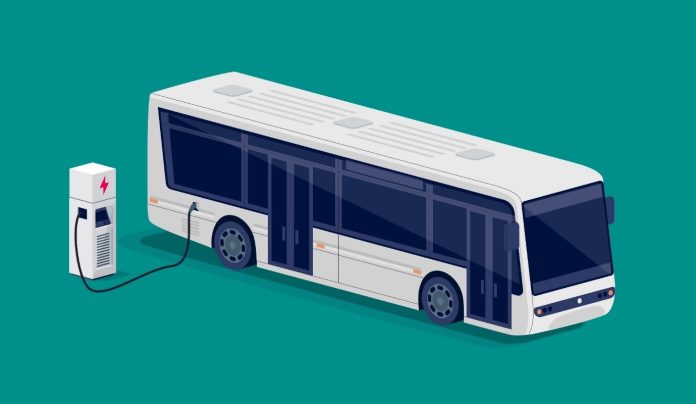Electric buses are increasingly becoming a popular mode of transportation as they offer numerous benefits, including reduced greenhouse gas emissions, lower operating costs, and a quieter riding experience. In this article, we’ll explore the advantages of electric buses and how they can help reduce air pollution.
What are Electric Buses?
Electric buses are battery-powered vehicles that run on electricity instead of fossil fuels. They are typically powered by electric motors that draw energy from a battery bank, which can be recharged using electricity from renewable sources like solar or wind power.
The benefits of electric buses are numerous. Firstly, they produce zero tailpipe emissions, which means they don’t release harmful pollutants like carbon dioxide, nitrogen oxides, or particulate matter. This makes them a more sustainable alternative to diesel buses, which contribute to air pollution and climate change.
Secondly, electric buses are cheaper to operate than diesel buses due to their lower fuel costs and reduced maintenance needs. They require less maintenance due to their simpler powertrain and lack of engine noise, which can also reduce repair costs.
Thirdly, electric buses are quieter than diesel buses, which can provide a more comfortable and pleasant riding experience for passengers. This is especially important for low-income communities and seniors who may be more sensitive to noise pollution.
Lastly, electric buses can help improve public health by reducing air pollution, which can lead to fewer respiratory illnesses and other health problems.
Advantages Of Electric Buses
Electric buses offer several advantages over traditional diesel buses. Here are some of the key benefits:
- Reduced Greenhouse Gas Emissions: Electric buses produce zero tailpipe emissions, which means they don’t release harmful pollutants like carbon dioxide, nitrogen oxides, or particulate matter. This makes them a more sustainable alternative to diesel buses, which contribute to air pollution and climate change.
- Lower Operating Costs: Electric buses are cheaper to operate than diesel buses due to their lower fuel costs and reduced maintenance needs. They require less maintenance due to their simpler powertrain and lack of engine noise, which can also reduce repair costs.
- Quieter Riding Experience: Electric buses are much quieter than diesel buses, which can provide a more comfortable and pleasant riding experience for passengers.
- Improved Public Health: Electric buses can help improve public health by reducing air pollution, which can lead to fewer respiratory illnesses and other health problems.
- Reduced Noise Pollution: Electric buses are also quieter than diesel buses, which can help reduce noise pollution in urban areas.
Case Studies Of Electric Buses
Several cities around the world have already implemented electric buses as part of their public transportation systems. Here are some examples:
- Los Angeles, California: The Los Angeles County Metropolitan Transportation Authority (Metro) has invested in a fleet of electric buses as part of its efforts to reduce greenhouse gas emissions. The agency plans to transition its entire bus fleet to electric by 2030.
- Shenzhen, China: Shenzhen, a city in southern China, has been a leader in electric bus adoption, with over 16,000 electric buses in service. The city has achieved significant air pollution reductions as a result of its electric bus program.
- Santiago, Chile: Santiago has also been a pioneer in electric bus adoption, with over 2,000 electric buses in service. The city has seen a reduction in greenhouse gas emissions and improved air quality as a result of its electric bus program.
Challenges Of Electric Bus Adoption
While electric buses offer numerous benefits, there are still some challenges associated with their adoption. Here are some of the key challenges:
- High Upfront Costs: Electric buses are more expensive to purchase than diesel buses, which can make them a barrier for some transit agencies. However, the long-term cost savings from reduced fuel and maintenance costs can offset the upfront costs over time.
- Limited Range: Electric buses currently have a limited range, which can make them less suitable for longer routes. However, advances in battery technology are improving the range of electric buses, and some models now have ranges of over 200 miles.
- Charging Infrastructure: Electric buses require a charging infrastructure, which can be expensive to install and maintain. However, some transit agencies are partnering with charging companies to develop more affordable charging solutions.
- Charging Time: Charging electric buses takes longer than refueling diesel buses, which can be a challenge for transit agencies that need to keep buses on schedule. However, advances in charging technology are improving the charging time of electric buses, and some models can be charged in as little as 30 minutes.
According to The Insight Partners The electric bus market was valued at US$ 29,179.51 million in 2021 and is expected to reach US$ 105,808.15 million by 2028; it is estimated to register a CAGR of 20.2% from 2021-2028.
Conclusion
Electric buses offer numerous benefits over diesel buses, including reduced greenhouse gas emissions, lower operating costs, and improved air quality. While there are still some challenges associated with their adoption, the benefits of electric buses make them an increasingly attractive option for transit agencies around the world. As battery technology improves and charging infrastructure is developed, we can expect to see even more widespread adoption of electric buses in the coming years.





